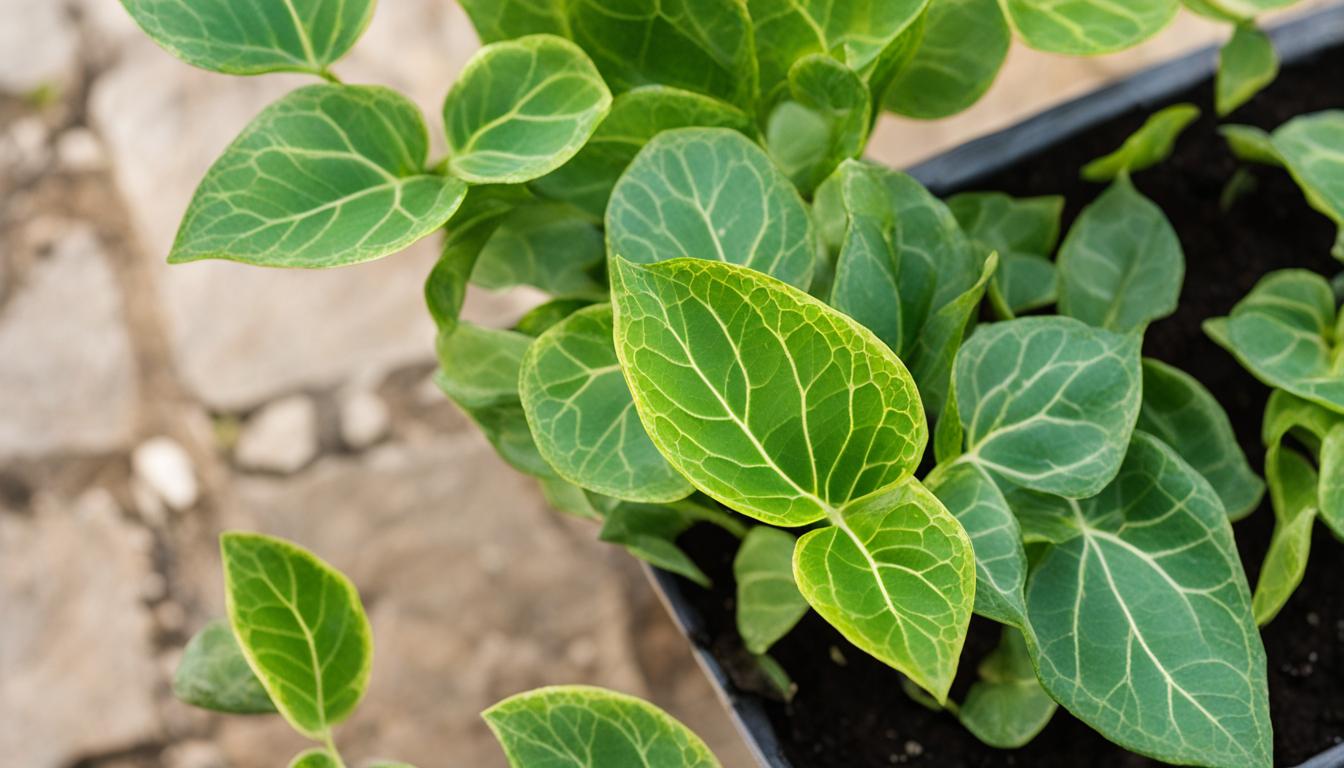
Nickel deficiency in plants can have detrimental effects on their growth and overall health. Nickel is an essential nutrient that plays a crucial role in various plant processes, including N metabolism and biological N fixation.
When plants lack sufficient nickel, they may exhibit symptoms such as necrosis of the leaf tips and reduced efficiency of N fixation.
Fortunately, there are effective solutions to address nickel deficiency in plants. By applying a dilute solution of nickel to the affected plants, the symptoms can be reversed.
Nickel is typically accumulated in plant organs or tissues, such as leaves. In some cases, nickel deficiency can also lead to delayed nodulation and reduced disease tolerance in plants.
It’s important to note that nickel availability in soils can be influenced by factors such as pH levels. Nickel becomes less available in soils with higher pH levels.
While soil testing for nickel deficiency is not common, if deficiency symptoms occur, foliar application of nickel can be an effective solution.
Key Takeaways:
- To solve nickel deficiency in plants, apply a dilute nickel solution to reverse symptoms.
- Nickel deficiency can lead to necrosis of leaf tips and reduced N fixation efficiency.
- Soil testing for nickel deficiency is not common, but foliar application can be effective.
- Nickel is accumulated in plant organs or tissues, such as leaves.
- High pH levels in soils can reduce nickel availability.
Functions of Nickel in Plants and Symptoms of Nickel Deficiency
Nickel is an essential micronutrient for plants, playing a crucial role in various physiological processes. One of its main functions is as a constituent of several enzymes involved in nitrogen metabolism, such as urease.
Urease is responsible for converting urea into ammonium, which plants can utilize as a source of nitrogen. Without sufficient nickel, the activity of urease is impaired, leading to urea accumulation and toxicity in plants.
Identifying nickel deficiency in plants is important to ensure optimal growth and development. Some common symptoms of nickel deficiency include necrosis of leaf tips, chlorosis of young leaves, reduced leaf size, and less upright leaf growth.
In woody plants like pecans, additional symptoms may include rounding of leaflet tips and the development of “mouse-ear” leaves. These visual indicators, along with tissue testing, can help with the identification of nickel deficiency.
It is crucial to address nickel deficiency promptly to prevent further damage to plant health. Foliar application of nickel salts or chelated forms can be an effective solution to alleviate symptoms and restore normal growth.
Regular monitoring of plant health and early detection of nickel deficiency can help ensure proper nutrient balance and promote optimal plant growth.
Table: Symptoms of Nickel Deficiency in Plants
| Symptoms | Description |
|---|---|
| Necrosis of leaf tips | Death or browning of the tips of leaves |
| Chlorosis of young leaves | Pale or yellowing of new leaves |
| Reduced leaf size | Smaller than normal leaf size |
| Less upright leaf growth | Leaves may droop or have a more horizontal growth pattern |
| Rounding of leaflet tips | Leaflet tips have a rounded instead of pointed appearance (in woody plants) |
| “Mouse-ear” leaves | Leaves become distorted with a mouse-ear-like shape (in woody plants) |
Understanding the functions of nickel in plants and recognizing the symptoms of nickel deficiency allow us to take appropriate measures to ensure the health and vitality of our plants.
By providing the necessary nickel supplementation and maintaining a balanced nutrient profile, we can support optimal growth and development, enabling plants to thrive.
Nickel Concentration in Soils
Nickel is an essential micronutrient for plant growth and plays a crucial role in various physiological processes. Understanding the concentration of nickel in soils is essential for maintaining optimal plant health and preventing nickel deficiency.
The availability of nickel in soils is influenced by factors such as pH and the presence of other metal cations like zinc and copper.
In most agricultural soils, nickel is naturally present at concentrations ranging from 5 to 500 mg/kg. However, the availability of nickel for plant uptake can be affected by soil pH. High-pH soils can limit the availability of nickel, leading to nickel deficiency in plants.
Excessive use of zinc and copper fertilizers can compete with nickel uptake by plants, further exacerbating the risk of deficiency.
Soils with high nickel concentrations, such as those near metal refineries or treated with biosolids, may have limited plant-available nickel. In such cases, it is important to conduct soil testing to determine the availability of nickel and assess the need for supplementation.
While soil testing for nickel is not common, if high-pH soils or excessive metal cations are present, nickel fertilization may be necessary to ensure optimal plant growth and health.
| Soil Type | Nickel Concentration (mg/kg) |
|---|---|
| Acidic Soil | 5-20 |
| Neutral Soil | 20-100 |
| Alkaline Soil | 100-500 |
Understanding the nickel concentration in soils is crucial for optimizing plant growth and health. By assessing the availability of nickel and taking appropriate actions, such as soil amendments or foliar applications, growers can prevent nickel deficiency and ensure their plants receive the necessary micronutrients for optimal growth and development.
Nickel Uptake and Transport
Nickel uptake and transport are vital processes for plants to acquire and distribute this essential nutrient throughout their tissues. Plants possess specialized transport systems that enable them to absorb soluble Ni2+ ions from the soil.
Once inside the plant, nickel is readily transported and can be preferentially translocated to developing seeds in certain species. The concentration of nickel in plant tissue varies depending on factors such as soil availability, plant species, pH levels, soil moisture, and root health.
However, nickel deficiency can disrupt these uptake and transport processes, impeding plants’ ability to metabolize urea and fix nitrogen efficiently.
As a result, plants may exhibit symptoms such as necrosis of leaf tips and reduced overall growth. Notably, leguminous crops have a unique requirement for nickel, and deficiency in these plants can lead to delayed nodulation and decreased nitrogen fixation efficiency.
Influencing Factors
Several factors can influence nickel uptake and transport in plants. Soil pH plays a crucial role, as high-pH soils can decrease the availability of nickel to plants.
Soil moisture levels and nematode damage to roots can affect the uptake and transport processes. Understanding and addressing these factors are essential for maintaining optimal plant health and growth.
It is worth noting that nickel deficiency is not a common issue in most agricultural soils. However, in cases where deficiency symptoms are observed, foliar application of nickel can be effective in correcting the nutritional imbalance.
Soil testing for nickel is not typically conducted, but if high-pH soils or excessive metal cations like zinc and copper are present, it may be necessary to consider nickel fertilization to ensure healthy plant growth.
| Influencing Factors | Effect on Nickel Uptake and Transport |
|---|---|
| Soil pH | High-pH soils can decrease nickel availability |
| Soil moisture | Soil moisture levels can impact the uptake and translocation of nickel |
| Nematode damage to roots | Nematode damage can affect the plants’ ability to absorb and transport nickel |
Focusing on providing an appropriate nutrient balance and addressing underlying factors such as pH, moisture, and root health can help prevent nickel deficiency and maintain optimal plant growth and health.
Fertilizing with Nickel and Nickel Toxicity
If your plants are experiencing nickel deficiency, there are effective ways to address this issue. While soil application of nickel is rarely necessary, foliar application of nickel salts or chelated forms can be beneficial.
By applying these forms directly to the leaves, you can provide your plants with the necessary nickel they need for healthy growth.
It’s important to note that nickel toxicity is unlikely to occur in greenhouse crops and is less toxic compared to other heavy metals like copper.
If you notice symptoms such as suppressed shoot and root growth, chlorosis of new leaves, and eventual necrosis, it’s crucial to address this issue promptly. Tissue testing can help verify nickel toxicity, and it’s essential to correct any underlying factors contributing to this condition.
To prevent nickel toxicity, consider the source of your fertilizer or irrigation water. Excessive levels of nickel in these inputs can lead to toxicity in plants.
Similarly, high pH levels and micronutrient deficiencies can also contribute to nickel toxicity. Ensuring a balanced nutrient intake and proper pH levels can go a long way in preventing nickel toxicity and promoting healthy plant growth.
FAQ
What are the symptoms of nickel deficiency in plants?
Nickel deficiency in plants can lead to necrosis of the leaf tips, chlorosis of young leaves, reduced leaf size, and less upright leaf growth. For woody plants like pecans, symptoms may also include rounding of leaflet tips and development of “mouse-ear” leaves.
How can nickel deficiency be identified in plants?
Nickel deficiency can be identified through tissue testing and visual observation of symptoms. Tissue testing involves analyzing plant tissue for its nickel concentration, while visual observation includes looking for symptoms such as leaf tip necrosis and chlorosis.
What causes nickel deficiency in plants?
Nickel deficiency in plants can be caused by high-pH soils, excessive use of zinc and copper, or limited plant-available nickel in soils with high nickel concentrations, such as those near metal refineries or treated with biosolids.
How can nickel deficiency in plants be treated?
If nickel deficiency is identified, foliar application of nickel salts or chelated forms can be effective in treating the deficiency. Soil application of nickel is rarely needed as most plants are adequately supplied with trace amounts of nickel in soil or fertilizers.
What are the functions of nickel in plants?
Nickel is an essential nutrient for plant growth and development. It is involved in various plant processes, such as N metabolism and biological N fixation. Nickel is also a functional constituent of several enzymes, such as urease, which helps convert urea into the ammonium ion for plant use as a source of nitrogen.
How does nickel uptake and transport work in plants?
Plants have transport systems that allow them to take up nickel in the form of soluble Ni2+ ions. Nickel is readily transported within plants and is preferentially translocated to developing seeds in some species. Nickel uptake and transport are influenced by factors such as pH, soil moisture, and nematode damage to roots.
Is nickel toxicity a concern for plants?
Nickel toxicity is unlikely to occur in greenhouse crops and is less toxic than other heavy metals like copper. However, excessive levels of nickel in fertilizer or irrigation water, high pH, or micronutrient deficiencies can lead to nickel toxicity. Symptoms include suppressed shoot and root growth, chlorosis of new leaves, and eventually necrosis and plant death.
How can nickel toxicity in plants be prevented?
To prevent nickel toxicity in plants, it is important to correct underlying factors such as excessive levels of nickel in fertilizer or irrigation water, high pH, or micronutrient deficiencies. Providing appropriate nutrient balance and avoiding excessive nickel levels can help prevent nickel toxicity.





